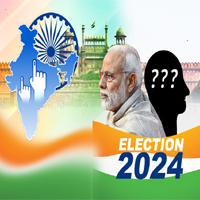The Rise of New India: The 2024 election, the 3rd largest economy, and 100 years of independence
By Raj Shah
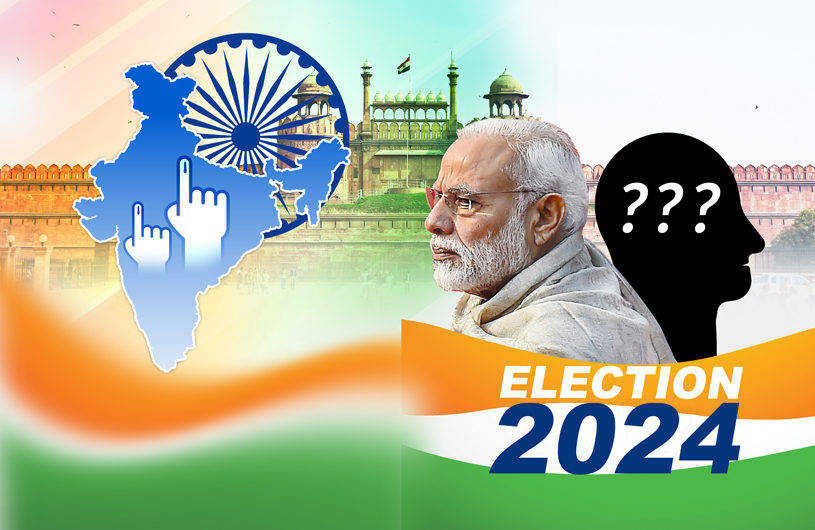
As India gears up for the 2024 general elections, the nation stands at a pivotal juncture, with Prime Minister Narendra Modi promising an economic leap to become the third-largest economy. This election is underscored by the critical involvement of youth and women voters, whose preferences and participation will significantly shape the outcome. Modi’s ambitious vision extends beyond this electoral milestone, aiming to transform India into a developed country by 2047, the centennial of its independence. This vision encapsulates a comprehensive strategy focusing on economic growth, technological innovation, and social inclusivity, aligning immediate political objectives with long-term national aspirations.
The Political Landscape
As India approaches its 2024 general elections, the political landscape is marked by a confluence of enduring legacies and emergent dynamics. The Bharatiya Janata Party (BJP), under the leadership of Prime Minister Narendra Modi, aims to secure a third consecutive term. The BJP’s campaign is expected to highlight the government’s achievements in infrastructure development, digital innovation, and national security. Modi’s leadership style, characterized by a strong personal brand and a narrative of decisive governance, continues to be a central element of the BJP’s appeal.
Opposing the BJP is a coalition of opposition parties predominantly led by the Indian National Congress. The Congress, with its rich historical legacy of leading India to independence, faces the challenge of reinvigorating its base and presenting a cohesive and compelling alternative to the BJP. Additionally, the regional parties in states like West Bengal, Tamil Nadu, Uttar Pradesh, and Maharashtra were poised to play a critical role in shaping the electoral landscape. Historically, these parties have wielded significant influence, leveraging regional identities and issues to mobilize support. However, the absence of strong leadership and a coherent agenda has somewhat diminished their potential impact. With most polls indicating a landslide victory for the Bharatiya Janata Party (BJP), it’s clear that the regional forces have struggled to present themselves as viable alternatives to the incumbent central government. The inability of these regional parties to consolidate their base and articulate a clear vision has significantly influenced the electoral predictions, tilting the scales in favor of the BJP.
Key Issues at Stake
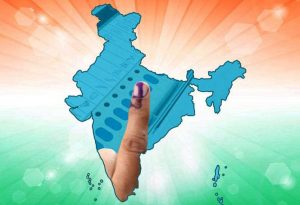 Economic Growth and Reform: India’s economy, aspiring to become a global powerhouse, faces the dual challenge of sustaining high growth rates and ensuring that the benefits of growth are equitably distributed. The electorate’s focus is on job creation, the support of small and medium enterprises, and reforms in sectors such as agriculture and manufacturing.
Economic Growth and Reform: India’s economy, aspiring to become a global powerhouse, faces the dual challenge of sustaining high growth rates and ensuring that the benefits of growth are equitably distributed. The electorate’s focus is on job creation, the support of small and medium enterprises, and reforms in sectors such as agriculture and manufacturing.
Digital Innovation and Governance: India’s digital revolution has transformed the landscape of governance and service delivery. The electorate is increasingly evaluating political parties on their ability to leverage technology for efficient governance, digital literacy, and the promotion of a knowledge-based economy.
Environmental Concerns: With the pressing challenge of climate change, environmental policies have become crucial. Voters are looking for concrete plans on sustainable development, renewable energy adoption, and the conservation of natural resources.
National Security and Foreign Policy: India’s strategic position and its neighborhood relations, particularly with Pakistan and China, are of high importance. The electorate seeks a government that can ensure national security while promoting a positive and proactive foreign policy.
The Electoral Process: India’s Electoral Commission oversees the mammoth task of conducting the general elections, ensuring fairness, transparency, and the integrity of the electoral process. The adoption of Electronic Voting Machines (EVMs) and Voter Verifiable Paper Audit Trail (VVPAT) systems has been pivotal in enhancing the credibility of the elections. However, issues such as electoral roll accuracy, the influence of money and media, and the need for greater transparency in campaign financing continue to be areas of concern.
The Growing Electorate
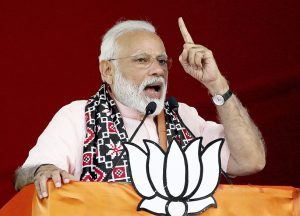
In the run-up to the 2024 general elections in India, understanding the demographic makeup of the electorate, especially the number of young and women voters, is crucial for grasping the potential direction and impact of the vote. India, with its burgeoning population, has witnessed a significant rise in the number of eligible voters, including a surge in younger voters and an increase in female voter participation, both of which could play a pivotal role in determining the electoral outcomes.
India’s electoral rolls have swelled over the years, reflecting not only the country’s growing population but also improved registration efforts by the Election Commission of India. As of the latest updates, the total number of eligible voters is expected to exceed 900 million, making it the largest democratic exercise in the world. This increase is significant, given that in the 2019 general elections, the total electorate was approximately 900 million. The precise figures for the 2024 elections will depend on the final voter lists, which are continuously updated to reflect new registrations and deletions due to deaths or duplications.
The Youth Wave: Young voters, particularly those in the 18–29 age group, represent a dynamic and potentially transformative segment of the Indian electorate. This demographic is characterized by its digital savviness, concern for employment opportunities, educational advancement, and a keen interest in political and social reforms. They are not just passive recipients of political narratives but active participants, seeking to shape the discourse through social media, public forums, and other platforms. Estimates suggest that young voters could account for around 15% to 20% of the total electorate, highlighting their potential to influence the electoral outcomes significantly.
Women Voters: A Powerful Influence Women voters have increasingly become a critical force in Indian elections, with their participation rates nearing or sometimes surpassing those of men in recent polls. This trend is a testament to growing political awareness and empowerment among women across the country. Women are not only voting in larger numbers but are also more assertive about their electoral choices, influenced by issues such as women’s safety, education, healthcare, and employment. In the 2019 elections, the percentage of female voters was nearly equal to that of male voters, indicating a closing gender gap in electoral participation. The expectation for the 2024 elections is that women will continue to play a decisive role, possibly influencing the electoral strategies of political parties, which are increasingly compelled to address issues of direct concern to women voters.
PM Modi’s guarantee
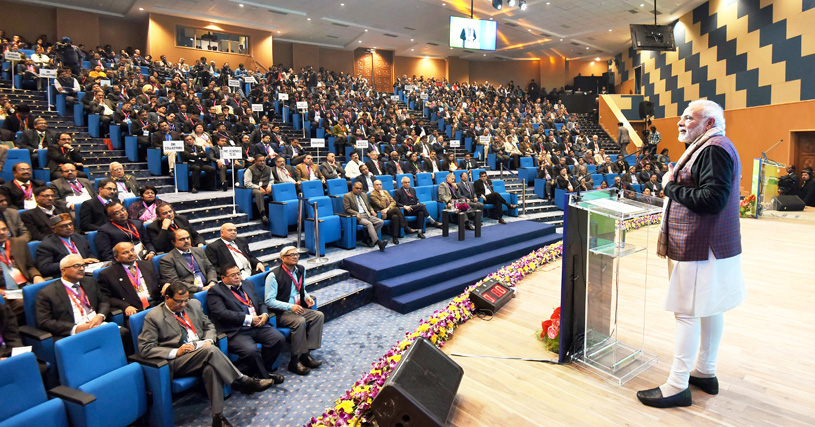
Prime Minister Narendra Modi’s assertion that India will become the third-largest economy during his third term captures the essence of an ambitious vision for the country. This statement is a clear indicator of the government’s confidence in its policies and reforms aimed at stimulating economic growth, attracting investment, and enhancing India’s stature on the global stage. Achieving this status would not only mark a significant milestone for India’s economic development but also reflect on Modi’s leadership and the BJP’s governance model.
The Context of Modi’s Guarantee
This bold guarantee is set against the backdrop of India’s economic trajectory over the past few years. Despite facing challenges like the COVID-19 pandemic, which had a severe impact on economies worldwide, India has shown resilience and a capacity for robust recovery. The government’s focus has been on a mix of short-term relief measures and long-term structural reforms aimed at improving the business environment, fostering innovation, and enhancing manufacturing capabilities.
Key Strategies and Initiatives
To realize the vision of becoming the third-largest economy, the Modi administration has embarked on several strategic initiatives, including:
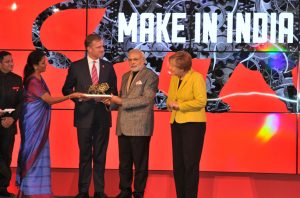 Make in India: Aiming to transform India into a global manufacturing hub, this initiative seeks to increase the manufacturing sector’s contribution to GDP and create millions of jobs.
Make in India: Aiming to transform India into a global manufacturing hub, this initiative seeks to increase the manufacturing sector’s contribution to GDP and create millions of jobs.
Digital India: By promoting digital literacy and infrastructure, the government aims to create a digitally empowered society and knowledge economy.
Infrastructure Development: Significant investments in infrastructure, including roads, railways, airports, and urban development, are intended to improve connectivity and efficiency.
Reforms in Agriculture and Rural Economy: Efforts to modernize agriculture, increase farmers’ incomes, and strengthen rural economies are crucial for inclusive growth.
Financial Inclusion and Direct Benefit Transfers: Initiatives like the Jan Dhan Yojana aim to bring more citizens into the formal banking system, ensuring direct and transparent benefits from government schemes.
Challenges and opportunities
Achieving the status of the third-largest economy requires navigating a complex landscape of challenges and opportunities. On one hand, India benefits from a large and young population, a growing middle class, and increasing digital penetration, which collectively offer a substantial domestic market and labor force. On the other hand, the country faces challenges such as the need for employment generation, environmental sustainability, and the improvement of health and educational outcomes.
International Dominance
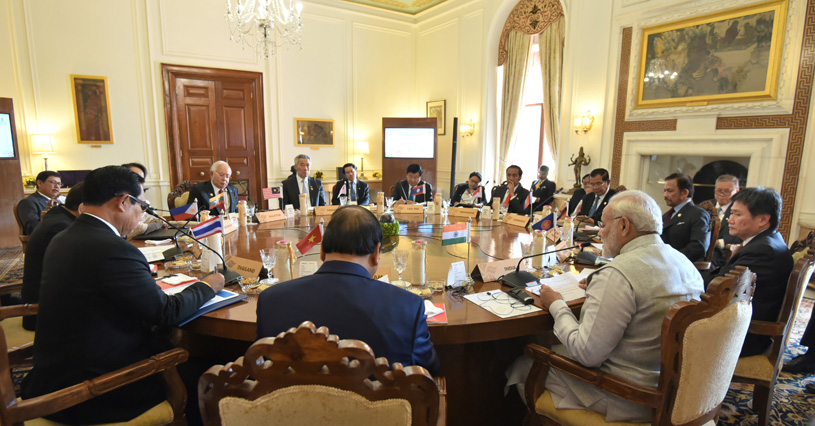 Ascending to the third-largest economy would significantly enhance India’s influence in global affairs. It would increase India’s leverage in international trade negotiations, global climate change discussions, and geopolitical strategies, particularly in the Indo-Pacific region.
Ascending to the third-largest economy would significantly enhance India’s influence in global affairs. It would increase India’s leverage in international trade negotiations, global climate change discussions, and geopolitical strategies, particularly in the Indo-Pacific region.
Modi’s vision for India in 2047
Prime Minister Narendra Modi’s vision for India in 2047, marking 100 years of independence, is a comprehensive blueprint aimed at transforming the country into a global leader across various fronts. This vision encompasses economic prowess, technological advancements, social equity, environmental sustainability, and a prominent role in global affairs. Modi envisions a future where India not only celebrates its rich cultural heritage but also leads the way in innovation, prosperity, and social harmony.
Prime Minister Narendra Modi’s vision for India by 2047, when the nation will mark 100 years of independence, is ambitious and encompasses a broad spectrum of objectives aimed at transforming the country into a global powerhouse. This vision is rooted in a comprehensive approach that seeks to leverage India’s strengths—its demographic dividend, cultural diversity, and technological capabilities—while addressing the challenges that have historically hindered its progress. By laying out a roadmap for the next two decades, Modi aims to steer India towards achieving not just economic prosperity but also social harmony, environmental sustainability, and a prominent role on the international stage.
Economic Growth and Self-Reliance
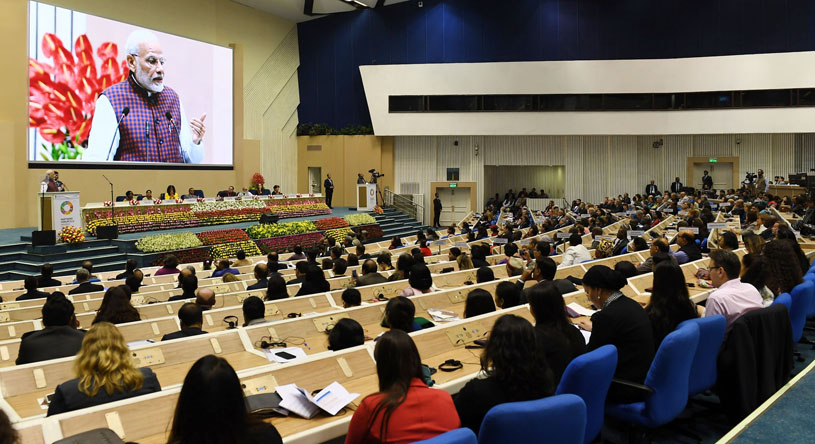
Modi’s vision for 2047 includes establishing India as one of the world’s top economies, characterized by sustainable growth, self-reliance, and global competitiveness. This includes a focus on self-reliance (Atmanirbhar Bharat), where the emphasis is on boosting domestic manufacturing, reducing dependency on imports, and becoming an integral part of the global supply chain. By 2047, India aims to have a well-diversified economy that is innovative, digitally advanced, and provides equitable opportunities to all its citizens.
Technological Innovation and Digital Empowerment
India is envisioned to be at the forefront of the fourth industrial revolution, leading in areas such as artificial intelligence, robotics, space technology, and green energy. Modi’s vision includes a digitally empowered society where technology plays a central role in governance, education, healthcare, and economic development. The goal is to bridge the digital divide, ensuring that every citizen has access to digital services and the internet.
Social Inclusion and Quality of Life
A key aspect of Modi’s vision for 2047 is achieving social equity and inclusive development. A significant aspect of Modi’s vision is to ensure social inclusion and improve the quality of life for every Indian. This includes access to quality education and healthcare, affordable housing, clean water, eradicating poverty, and sanitation for all. Modi’s government aims to eradicate poverty, end caste and gender discrimination, and ensure that the benefits of India’s growth are shared by all sections of society, particularly the marginalized and underprivileged.
Sustainable Development and Environmental Protection
Recognizing the critical challenge posed by climate change, Modi’s vision includes a strong emphasis on sustainable development and environmental protection. India aims to lead by example in the transition to renewable energy, conservation of biodiversity, water resource management, and sustainable agriculture. The goal is to achieve a balance between economic growth and environmental sustainability, ensuring a green and clean India for future generations.
Strengthening Democracy and Governance
By 2047, India seeks to further strengthen its democratic institutions and governance models. Modi envisions a system where governance is transparent, efficient, and driven by technology to reduce corruption and improve service delivery. The focus is on decentralization and empowering local bodies, along with fostering a spirit of cooperation and consensus-building across the political spectrum.
Global Leadership
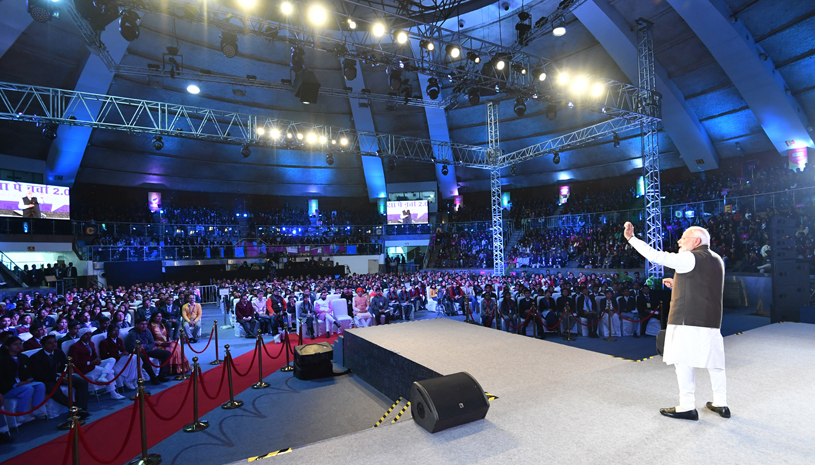
“India’s role on the global stage is envisioned to be more significant and influential by 2047. Modi sees India as a key player in shaping global policies on climate change, terrorism, and cybersecurity.”
India aims to strengthen its diplomatic ties, enhance trade relations, and play a leading role in international organizations, contributing to global peace, security, and development.
As India approaches the pivotal 2024 general elections, the nation stands on the cusp of transformative growth and unprecedented global influence. Prime Minister Narendra Modi’s guarantee that India will become the third-largest economy during his potential third term underscores an ambitious economic agenda aimed at leveraging India’s burgeoning youth demographic and enhancing women’s participation in the electoral process. These groups, pivotal to the electoral outcome, reflect the evolving dynamics of Indian society and its aspirations for equitable growth and inclusive development.
Modi’s vision for India in 2047, marking a century of independence, is not merely an economic blueprint but a holistic approach towards establishing India as a developed country. It encompasses sustainable development, technological innovation, social equity, and environmental stewardship, aiming to position India as a leader on the global stage. The synergy between Modi’s economic guarantees, the active role of youth and women in shaping the 2024 electoral discourse, and the long-term vision for 2047 encapsulates a strategic roadmap for India’s journey towards becoming a developed nation, characterized by prosperity, inclusivity, and global leadership. This convergence of immediate electoral stakes and long-term national aspirations highlights a critical phase in India’s democratic journey, emphasizing the collective resolve to achieve remarkable milestones by the centenary of its independence.
About the Author :
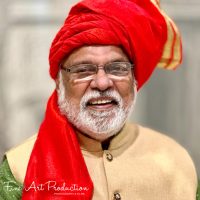 A software engineer by profession, Indian culture enthusiast, ardent promoter of hinduism, and a cancer survivor, Raj Shah is a managing editor of Desh-Videsh Magazine and co-founder of Desh Videsh Media Group. Promoting the rich culture and heritage of India and Hinduism has been his motto ever since he arrived in the US in 1969.
A software engineer by profession, Indian culture enthusiast, ardent promoter of hinduism, and a cancer survivor, Raj Shah is a managing editor of Desh-Videsh Magazine and co-founder of Desh Videsh Media Group. Promoting the rich culture and heritage of India and Hinduism has been his motto ever since he arrived in the US in 1969.
He has been instrumental in starting and promoting several community organizations such as the Indian Religious and Cultural Center and International Hindu University. Raj has written two books on Hinduism titled Chronology of Hinduism and Understanding Hinduism. He has also written several children books focusing on Hindu culture and religion.

